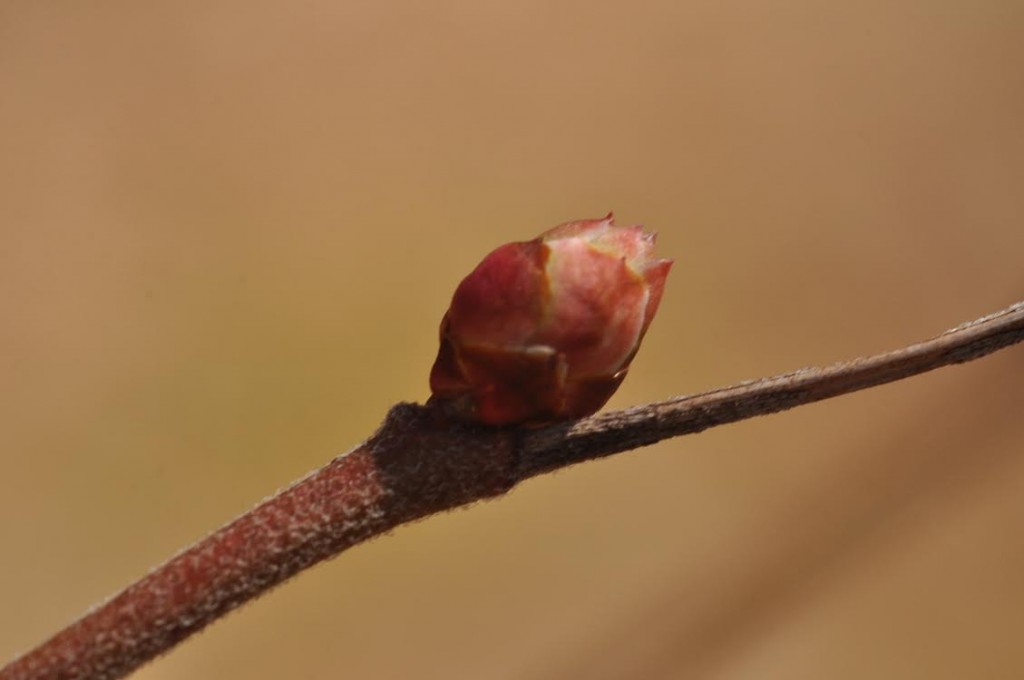
A bud of high-bush blueberry (Vaccinium corymbosum) photographed by Will Kerling on March 21, Beaver Dam Road (Cape May County).
The emergence of the first blueberry azures seems the first day of spring for many of us South Jersey butterflyers and our patience is being sorely tested this year.
Take a look at our list of Early & Late Dates at the top of the blog and you will see that we have long passed our log’s latest early date for blueberry azure: March 18, 2009. Next, take a look outside (snow again on March 26), and it’s easy to be convinced that we have several more days of azure-less winter still to go.
Given the upcoming week’s weather forecast, it seems we might reach April before we have our first record and celebrate true spring.
We do have our first record for a newly-emerging species: an eastern-tailed blue at Belleplain State Forest, found by Roger and Kathy Horn on March 22. Under the circumstances, that is surprisingly early for that species, and close to our log’s earliest record: March 18, 2012.
All other log reports this year, so far, are of three species that over-winter in the adult stage: mourning cloak, question mark, and eastern comma. These butterflies flew for an hour or two on a few of the handful of warm days we have had, then retreated back into hiding. (Let’s hope the Horns’ pioneering e.t.b. followed them into a good hiding place also.)
Blueberry azures over-winter in their chrysalises and emerge to fly once we have had a warm-enough/long-enough series of sunny 50-60 degree days. The females must lay their eggs on blueberry buds just before the blossoms open, as their caterpillars feed on the flower petals. Before that can happen, males must emerge to search for the females, mating must take place, and the females with fertilized eggs must search out blueberry buds in just the right condition.
In another week or two (hopefully!), we can follow the sequence. Will we see more azures this year because their emergence will be more compressed? Or will we see fewer because conditions have been so tough for them in March, 2014?
Shovel your walks, shake off your boots, and keep your hopes up for warmer days, everyone!
jc
